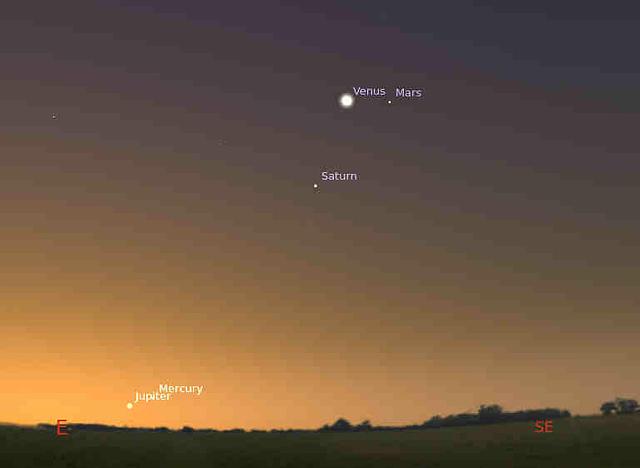Six Planets, One Star and Questions
For a few days from 18 March 2022, we may be lucky enough to see 6 planets if we wake up early about 30 minutes before sunrise (between 05:45 and 06:15 Hour Thailand Standard Time) and look in the East-Southeast (ESE) sky.

In the picture above we can Venus the brightest planet very clearly about 30 degrees up from the horizon. Mars is smaller and reddish a little to the right. Saturn is a little below Venus. Mercury is very small in east horizon. Jupiter is a bit bigger just below and more to the East. The Sun (our star) will be rising. So we don't have long to see both Jupiter and Mercury. They are worth a look.
I won't ask about the sixth planet. I am sure we all know where it is. But I will ask 2 questions:
- Can we draw up the orbits of all planets in the Solar system? (Hint - the Internet can help)
- Are Mercury and Jupiter moving close to each other that we see them close together? (hint - from the orbit diagram, we can try putting possible positions of the planets we can see in the picture above)
The answers can surprise us and move some of us closer to scientific learning techniques.
Good luck!
ความเห็น (0)
ไม่มีความเห็น